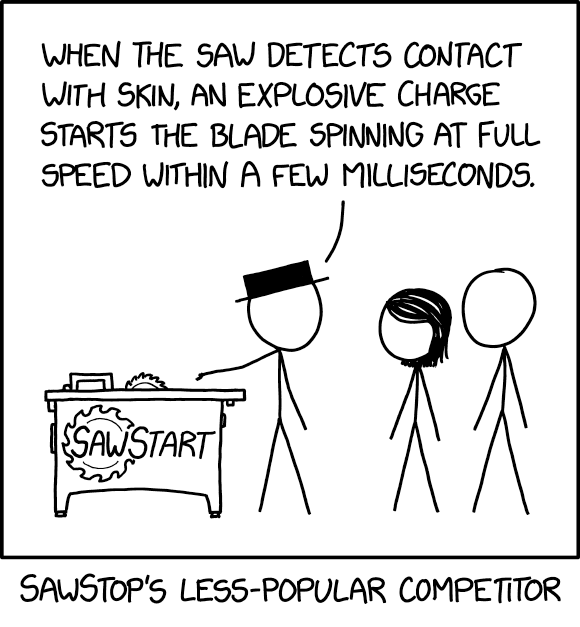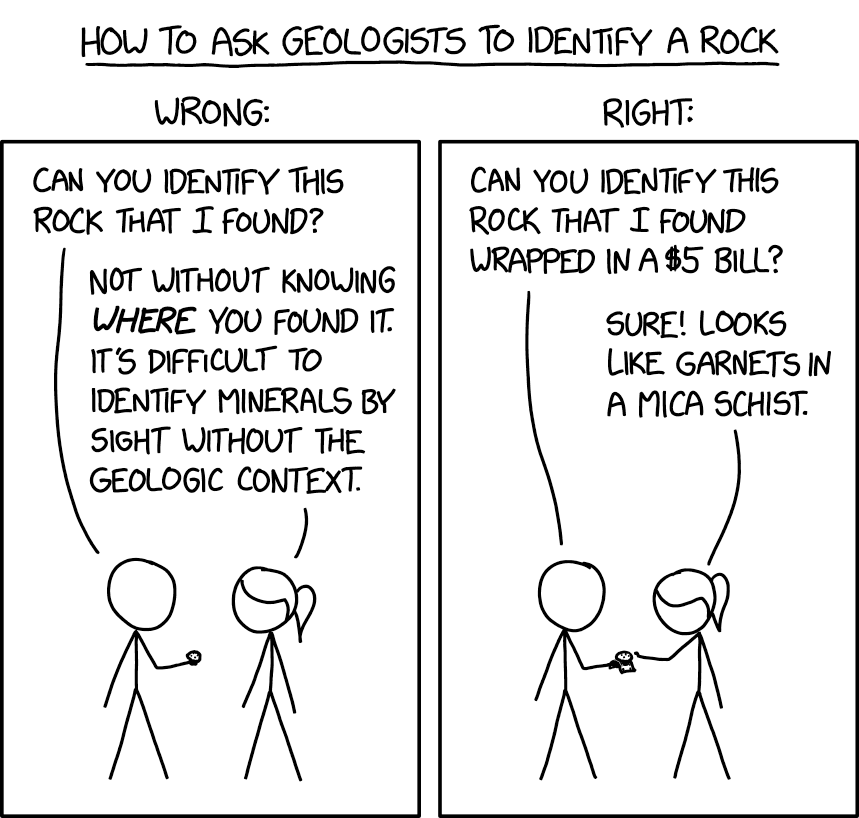Not by geologist standards, never mind astrophysisists. I imagine them at a multi-discipline conference. >snort< “You call 600-million years a long time? Lemme show you this!”

Not by geologist standards, never mind astrophysisists. I imagine them at a multi-discipline conference. >snort< “You call 600-million years a long time? Lemme show you this!”
“I know having so many base pairs makes rebasing complicated, but you’re in Bilateria, so shouldn’t you at LEAST be better at using git head?”
To save people googling, Git is a distributed version control system. A head in Git is a pointer to which version you are working on. This describes it in much more detail.
“The biggest I’ve seen in a published source in the wild is an 80-fold error in a reported distance, which I think came from a series of at least three unit conversions and area/length misinterpretations.”
I’ve seen far bigger errors than that. The worst is when exponents get stripped, either because the ^ disappears or the superscript formatting is lost. So “There are approximately 1080 atoms in the universe” becomes “There are approximately 1080 atoms in the universe.”
And then sometimes you’re left wondering why people are complaining that something changed to introduce error when it’s obvious that nothing has changed at all!
( note to mods, I didn’t touch a thing in the quote, Discourse did that. )
I feel like that’s a different kind of error. As you say, it was introduced purely mechanically, and not by human misunderstanding. And it’s often quite obvious when it occurs.
There was a news item on this issue a while ago: are black plastic utensils dangerous?
I’ll also point out that insects don’t eat square-anythings. They (and all animals) eat a volume (or mass) of something.
So how thick are these assumed blades of grass? What if the grass is thicker on the other side of the fence, as it so often seems? ![]()
The neat part about doing volume conversions vs. area conversions is now many fewer errors it takes to create a really big mistake. So we have that to look forward to in next week’s edition about volume errors.
We’re more closely related to lungfish than they are to sharks.
If they’re eating leaves, square centimetrage is a fair measure, the third dimension there is negligable.

Unless they’re eating succulents.
“This is the biggest breakthrough since astronomers noticed that the little crosshairs around red giant stars starting to burn helium are all the same size.”
Ah that illustration brings back memories. Right out of high school, I got a job at an art studio doing commercial illustrations. Seeing that Zipatone was a trip down memory lane.
Nit-Pick: It’s Fisher-Price.
![]()

“Unfortunately, SawStart is one-use-only. Once started, the blade cannot be stopped, and must be replaced with a fresh blade while the running one is carefully disposed of.”

“‘Is it worth anything?’ ‘I dunno, is the answer to that question worth another $5?’”
Sorry, this one is just flat-out wrong. Identifying rocks and minerals by sight (when the rock is in your hand) without any context is, in fact, how we got tested in geology pracs. What’s hard is identifying them from pictures.
I think he’s confusing rocks with archaeological artefacts.
I think that’s the joke. The geologist is just making an excuse in the first frame. She knew the answer right away when given a “context” of $5.
Aaah, that whooshed me. I assumed she was just bullshitting in the second one.
Years ago when on a trip to Colorado I took a mine tour, a couple hundred feet in an adit and (cautiously) peered down a shaft. Back at the entrance kids kept picking up random rocks and asked the guide if there was any silver in it. I said he should charge a dollar an assay.
Later that afternoon I bought a chunk of argentite about the size of your fist in a gem and mineral shop. It was noticeably heavier than a regular rock that size.